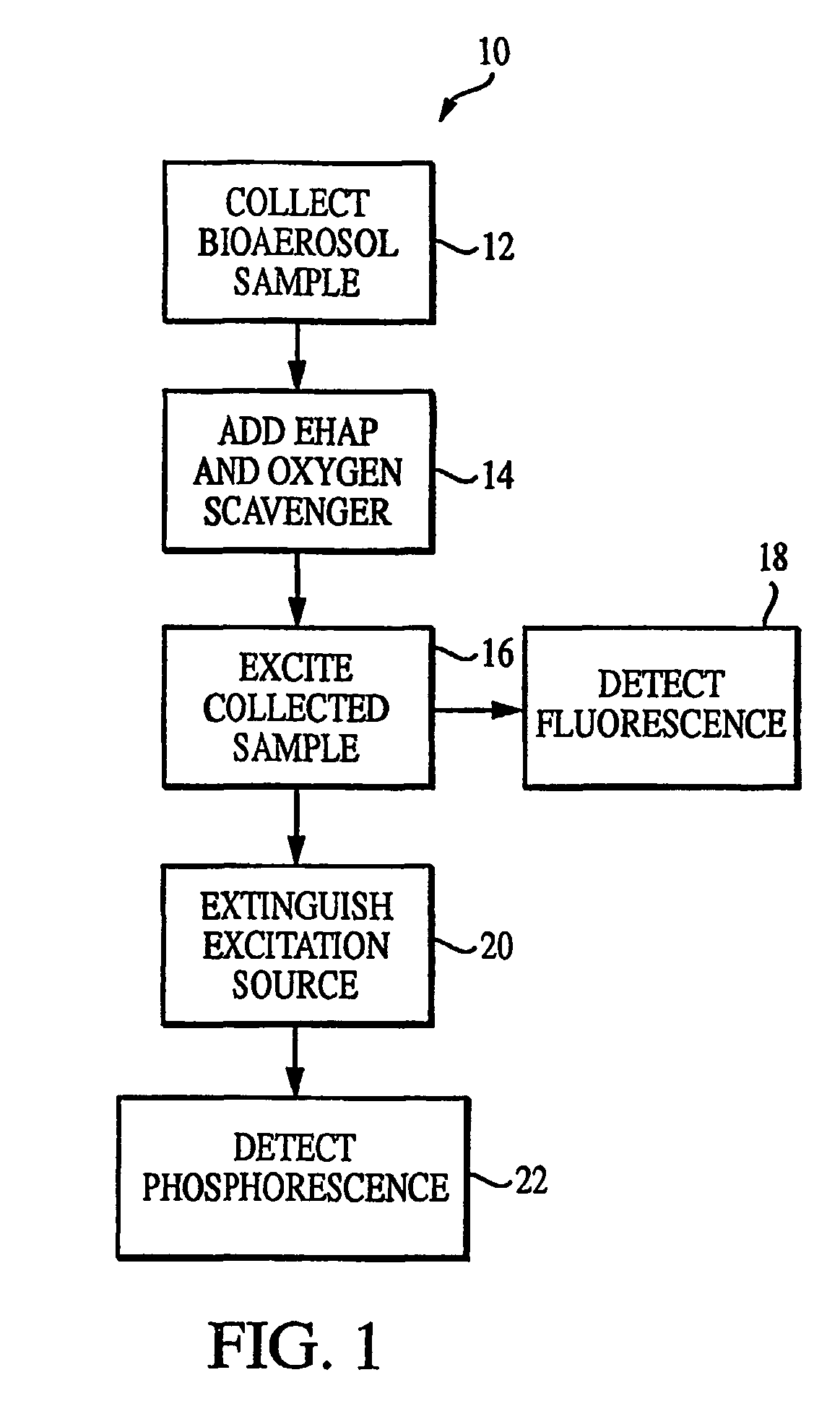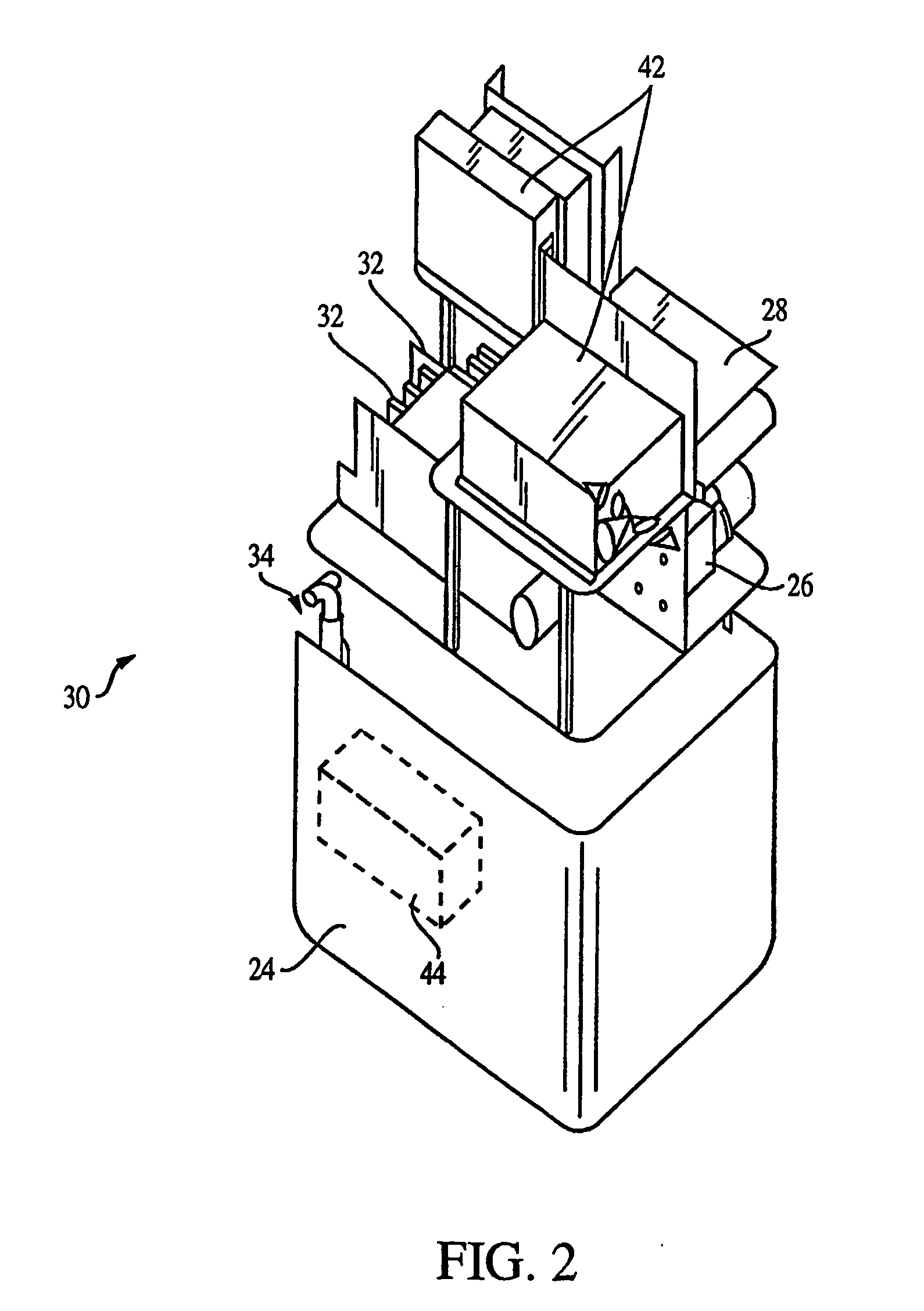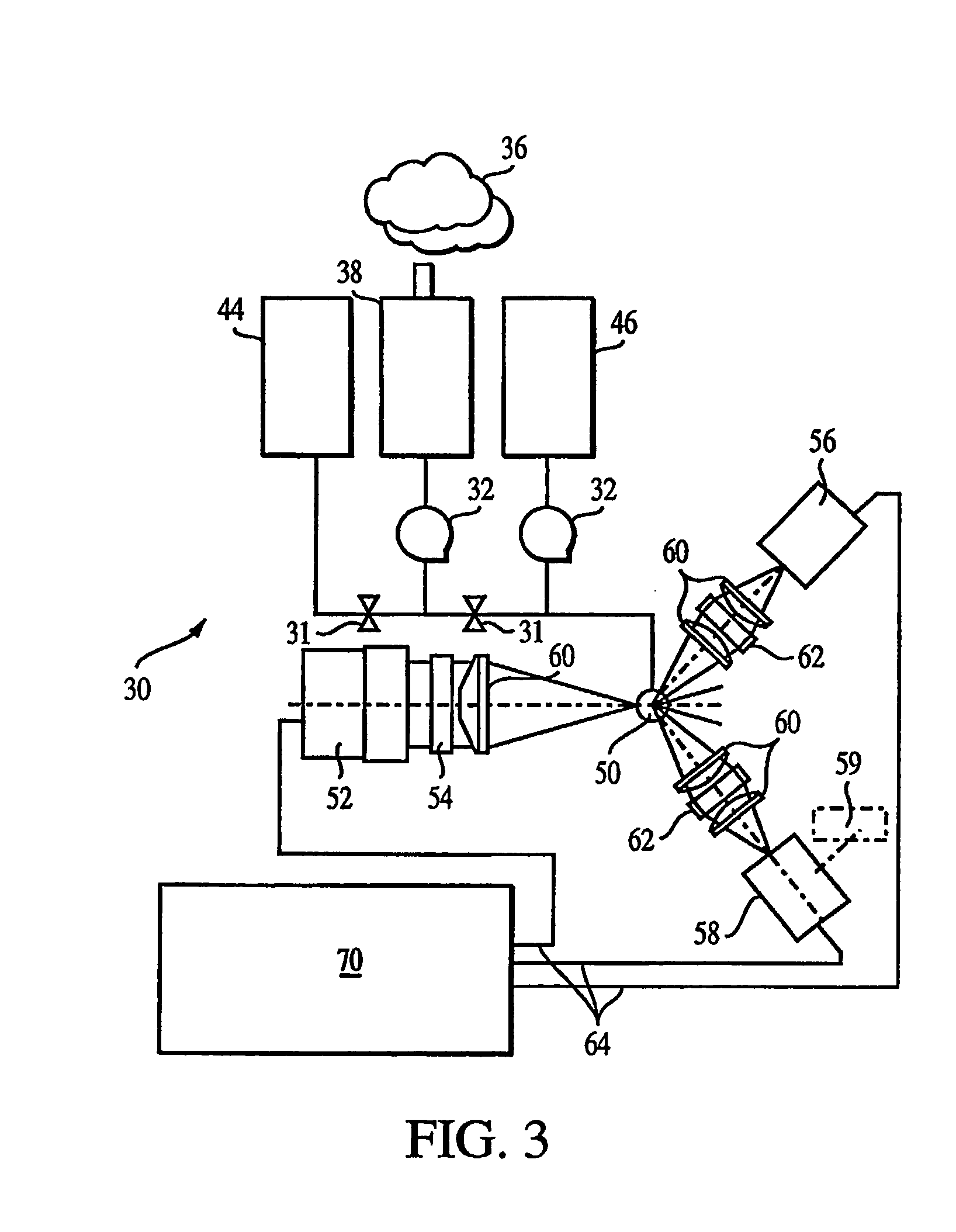Method and apparatus for detection of bioaerosols
a bioaerosol and detection method technology, applied in the field of sampling methodology, can solve the problems of low selectivity for bioaerosols of interest, potential threat of pathogen infection by pathogens, and high cost of instruments, so as to minimize the possibility of fluorescence and maximize detection
- Summary
- Abstract
- Description
- Claims
- Application Information
AI Technical Summary
Benefits of technology
Problems solved by technology
Method used
Image
Examples
Embodiment Construction
[0032]FIG. 1 illustrates an inventive method 10 based on the realization that hazardous biological materials dispersed in a particulate-containing airstream emit phosphoresce radiation at room temperature if bonded with an external heavy atom perturber (EHAP) in the presence of an oxygen scavenger, e.g., sodium sulfite.
[0033] In accordance with the above-stated inventive concept, the method 10 provides for the collection of a bioaerosol sample, as indicate by step 12. Following the collection of the bioaerosol sample, the latter is mixed with an EHAP. Among EHAPs for use herein, include, for example, one or more of potassium iodide, lead, thallium, lutetium, gallium, cesium, and barium each of which advantageously have a sufficient chemical affinity for association with the molecule of fluorophores contained in an airstream. Common fluorophores found in aerosols that can potentially be used to tag the collected aerosol sample are, for example, NADH, Tryptophan, Tyrosine, Riboflavin...
PUM
| Property | Measurement | Unit |
|---|---|---|
| wavelengths | aaaaa | aaaaa |
| time | aaaaa | aaaaa |
| phosphorescent | aaaaa | aaaaa |
Abstract
Description
Claims
Application Information
 Login to View More
Login to View More - R&D
- Intellectual Property
- Life Sciences
- Materials
- Tech Scout
- Unparalleled Data Quality
- Higher Quality Content
- 60% Fewer Hallucinations
Browse by: Latest US Patents, China's latest patents, Technical Efficacy Thesaurus, Application Domain, Technology Topic, Popular Technical Reports.
© 2025 PatSnap. All rights reserved.Legal|Privacy policy|Modern Slavery Act Transparency Statement|Sitemap|About US| Contact US: help@patsnap.com



